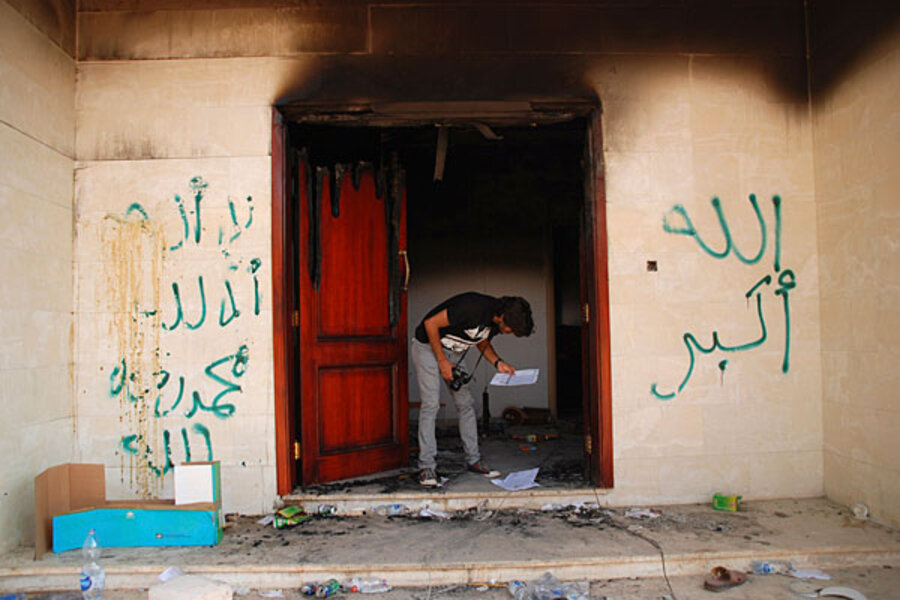Benghazi fallout: CIA reveals secret intelligence hub was nearby
Loading...
| WASHINGTON
A new account from the CIA of the Sept. 11 terrorist attack on the US consulate in Benghazi, Libya, reveals that intelligence-agency operatives responded within a half hour to the assault by heavily armed fighters on the poorly guarded mission.
The timeline offered by senior intelligence officials Thursday also disclosed for the first time that two of the four Americans killed in the attack were actually CIA intelligence contractors – and not State Department security personnel, as they were previously identified.
Overall, the CIA’s depiction of the events that led to the death of Ambassador Christopher Stevens offers new insight into US operations in the eastern Libyan city. It suggests that the small and lightly secured diplomatic mission served as a kind of cover for a larger but covert US intelligence presence, centered in an “annex” located about a mile from the consulate. This intelligence-gathering was focused on an area where Islamist extremists and Al Qaeda-affiliated militants were known to operate.
Yet the information does nothing to answer the myriad outstanding questions about Benghazi. Those questions include: Why did the consulate maintain flimsy security in an unstable area with militants known to have heavy weapons? Why were requests for increased security rebuffed in Washington? Why was the US ambassador staying at a mission under such risky conditions? And what did President Obama know about the terrorist attack and when?
By the CIA account, agency officers based at the annex arrived at the besieged mission within 25 minutes of the initial attack. The agency also dispatched reinforcements from the embassy in Tripoli and arranged for a Libyan military convoy to escort US officials away from the mission to aircraft waiting to remove them to safety.
The CIA officers joined State Department security immediately upon arrival at the mission in a frantic and ultimately futile attempt to locate Ambassador Stevens, according to the account. Stevens’s body was later traced to an area hospital when hospital workers used the cell phone in the ambassador’s pocket to try to figure out who he was.
According to the account, a lull in fighting of several hours ensued, until about 5 a.m. on Sept. 12, when a barrage of mortars surprised those guarding the mission. It was in the mortar attack that Tyrone Woods and Glen Doherty, two CIA intelligence contractors previously identified as State Department security personnel, were killed.
The CIA’s decision to disclose its involvement in the response to the Benghazi attack reflects a broader effort among administration officials to debunk reports of a lack of coordination and cooperation among federal agencies as the Benghazi attack unfolded. One report by Fox News last week claimed that the CIA had barred its operatives on the ground in Benghazi from answering the mission’s SOS.
The account puts the CIA and its Benghazi operations in a positive light, while casting doubt on the State Department’s preparedness in Benghazi. The picture seems certain only to add to congressional questioning of the level of security the State Department approved for the Benghazi mission.
Another question the CIA account does not answer is why the US ambassador to the United Nations, Susan Rice, was sent out to Sunday morning news shows on Sept. 16 with talking points, supplied by the CIA, which stuck with the version of events that begins with a mob demonstrating outside the Benghazi consulate over an anti-Muslim video. That version had “opportunistic” militants taking advantage of the mob to launch their attack on the diplomatic mission.
If the CIA was so quick to respond to the attack, as the new account reveals, it seems it would have known just as quickly that there was no demonstration outside the consulate acting as a catalyst to the tragic events.







